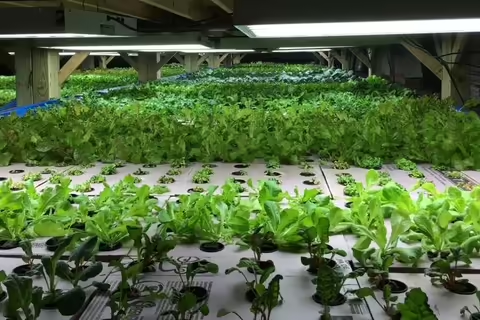URBANA, Ill. – Just because summer is over, doesn’t mean you have to stop gardening. Hydroponic systems allow year-round growing.
The year 2020 has created a lot of new gardeners, says Chris Enroth, University of Illinois Extension horticulture educator. Some may have dabbled in hydroponics, the process of growing plants in a liquid nutrient solution without the use of soil.
“When it comes to gardening in the ground, it is important to manage the soil,” Enroth says. “Hydroponics shifts that focus to managing the nutrient solution. It’s not any less or more work, you’re just modifying your practices.”
What options do home gardeners have when it comes to growing plants hydroponically?
There are several at-home hydroponic systems sold by various companies. Some come with all the materials you need. Nutrients are pre-measured and applied based on the manufacturer’s instructions. Some even come with an app that walks users through the process of growing hydroponically.
While these commercial home systems are convenient, they can be pricey.
Many home hydroponic growers begin their journey with a passive system using simple plastic storage tubs with a locking lid. Choose a container that is not clear or opaque to avoid light getting to the liquid solution which will encourage algae growth.
“Cut round holes in the lid sized to suspend a netted plastic pot in the tub’s nutrient solution, but narrow enough so the lip of the pot cannot slip through,” Enroth says. "The plant and the roots still need some type of structural support in the plastic pot. This is done with soilless media such as rock wool, perlite, coconut coir, expanded clay, or coarse sand."
An air stone attached to a pump helps inject oxygen into the solution and keeps the water moving. These can usually be found wherever aquariums are sold.
“Likely the biggest investment anyone making a DIY hydronics system will be the EC, electrical conductivity, meter and pH meter,” Enroth says. Some are priced as low as $20, while others are more than $200.
EC meters measure the amount of salts in the solution, which gives an idea of how much nutrition is available for the plants. The pH meter measures the water’s acidity or alkalinity, which will vary by source.
“Keep in mind this nutrient solution is your ‘soil,’ ”Enroth says. “Instead of a tiller for a traditional garden, you are buying tools to manage your solution.”
Most plants do well in a slightly acidic range of a 5 to 6 pH level. With the EC and pH measurement readings, users can adjust the nutrient solution as needed. “I’ve often found kits that include the meters and amendments take most of the guesswork out of managing the nutrient solution,” Enroth says.
One crucial component is supplemental light. An inexpensive shop light works well, and new LED technology is promising for indoor plant production.
Plant choice is important for indoor hydroponic systems. While tomatoes are unlikely to thrive, lettuces and herbs do very well.
“We grew basil in our hydroponic system and it did exceptionally well,” Enroth says. “Even if you don’t eat it, we just loved brushing against the leaves as winter sets in to give us a feeling of summer.”
SOURCE: Chris Enroth, Horticulture Educator, Illinois Extension
ABOUT EXTENSION: Illinois Extension leads public outreach for University of Illinois by translating research into action plans that allow Illinois families, businesses, and community leaders to solve problems, make informed decisions, and adapt to changes and opportunities.
PHOTO ACCESS: The photo in this article is available to download for media use.
